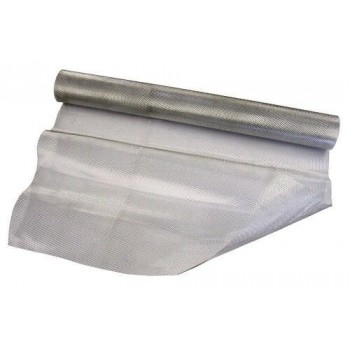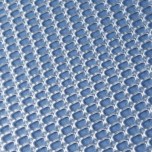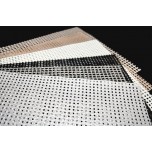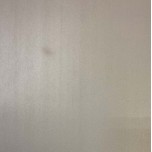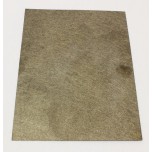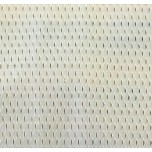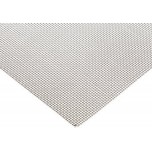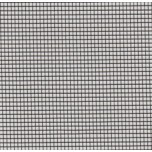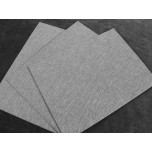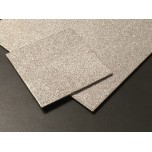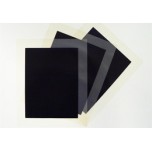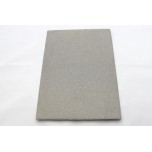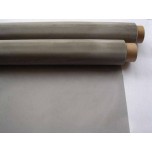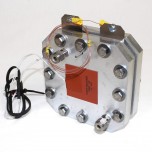Platinized Titanium Screen
Platinized Titanium (PtTi) Screens are primarily used in electrolyzer stacks as part of the flow field or diffuser material, particularly on the oxygen (anode) side, in place of the carbon-based Gas Diffusion Layers (GDL) used in fuel cells. Our platinized titanium screens are produced from expanded titanium that has been flattened and annealed, ensuring a smooth, flat surface suitable for use in electrolyzer or fuel cell stacks. Although most commonly used on the anode side of an electrolyzer, PtTi screens are often used on the Cathode side of the electrolyzer as well. Occasionally they can be found in fuel cells as well.
Why not use a Carbon based Gas Diffusion Layer in an Electrolyzer?
Carbon based GDL materials will be consumed and converted into CO2 gas in the presence of the Oxygen ions and Voltage found on the Anode (Oxygen) side of the electrolyzer. This secondary reaction of oxidizing the Carbon in the GDL will give temporarily lower electrolysis voltage, but this is a short lived phenomenon. The carbon GDL is quickly consumed, resulting in poor compression in the stack, and thus high resistance and lower performance.
You can still use carbon cloth or carbon paper material on the Hydrogen side (cathode) since there is no oxygen on that side that will oxidize the GDL material.
Why Platinized vs Untreated Titanium?
Untreated Titanium will not be consumed as a carbon Gas Diffusion Layer (GDL) will, however, the presence of the Oxygen does have an impact. Untreated Titanium quickly forms an Oxide coating (TiO2) in the presence of oxygen. This coating is an excellent insulator and will therefore increase the resistance in the cell, thereby lowering performance. This takes longer to be evident as a problem than the oxidation of the carbon GDL, but is still a factor.
This oxidation of the Titanium can be prevented by Gold coating or, as with this product, Platinization. The platinization is a very stable coating and also helps to promote the electrolysis process, increasing efficiency slightly and stabilizing performance dramatically.
Function of the Platinum Coating for This Product
The main functionality of the platinum coating is to maintain the electrical conductivity of the substrate itself for demanding applications such as longer operational lifetime or pressurized electrolyzer (up to 450 psi) applications. In the industry, it has been observed that platinized titanium screen can be used at the anode side of the PEM electrolyzer hardware at such pressure values. Higher pressures than 450 psi would create safety issues for titanium substrate in presence of pure oxygen even if the environment is fully wetted. Platinum coating does not have a continuous layer for its structure. The estimated platinum metal loading for this product is approximately 60-80 micrograms per cm2 of the substrate's physical dimensions.
Catalytic Activity of the Platinum Coating for this Product
The platinum coating in this product does not have any catalytic activity. Catalysis requires the material of interest to have sufficient surface defects and also sufficient loading for the catalytically active component. Platinum particles in the coating does not have the essential surface defects and has zero catalytic activity for most chemical or electrochemical reactions and hence, this product should not be used for catalysis reactions or applications that require catalytically active materials.
| Thickness | Strand Width | Long Way of Diamond | Percent Open Area |
| 0.002 | 0.004 | 0.031 | 62% |
| 0.004 | 0.006 | 0.031 | Undisclosed |
| 0.005 | 0.010 | 0.125 | 64% |
| 0.007 | 0.007 | 0.125 | 75% |
| 0.010 | 0.012 | 0.125 | 57% |
Write a review
Your Name:
Your Review: Note: HTML is not translated!
Rating: Bad Good
Enter the code in the box below:





